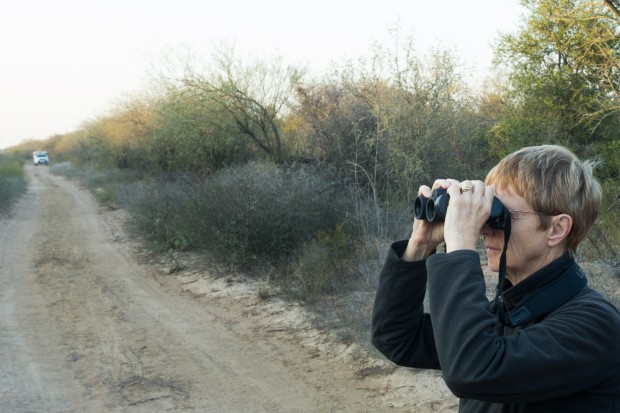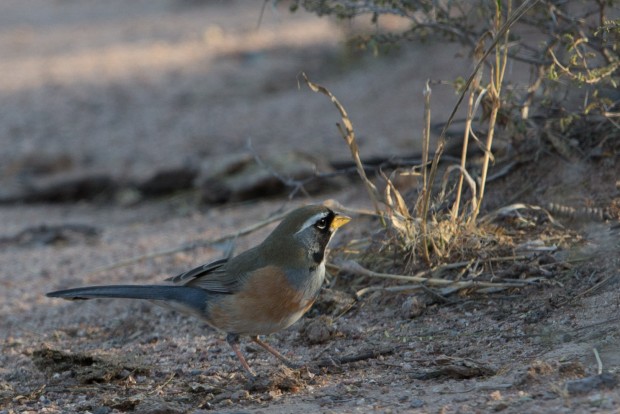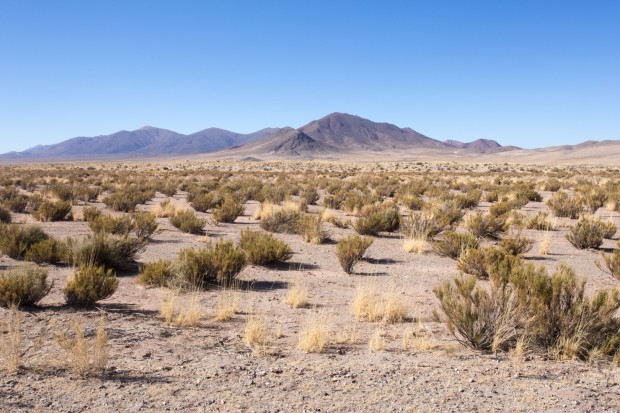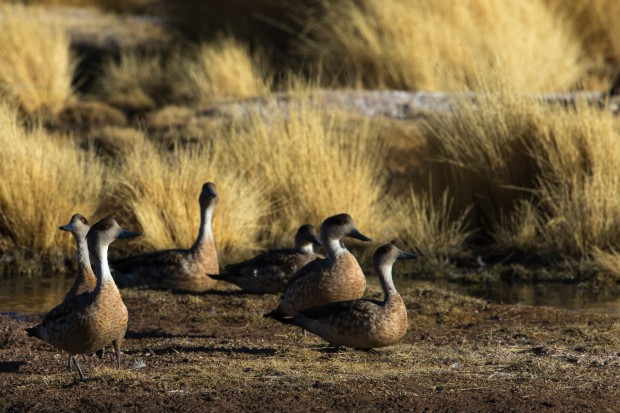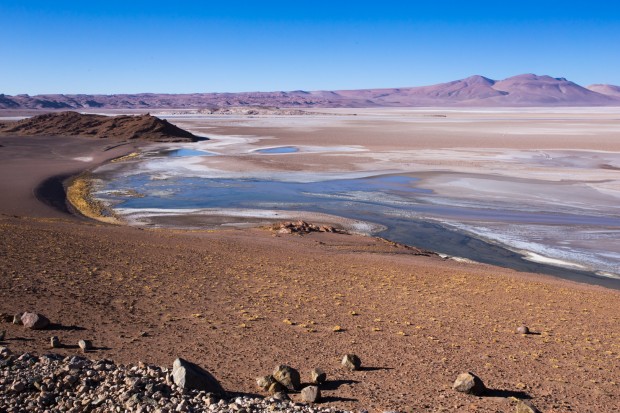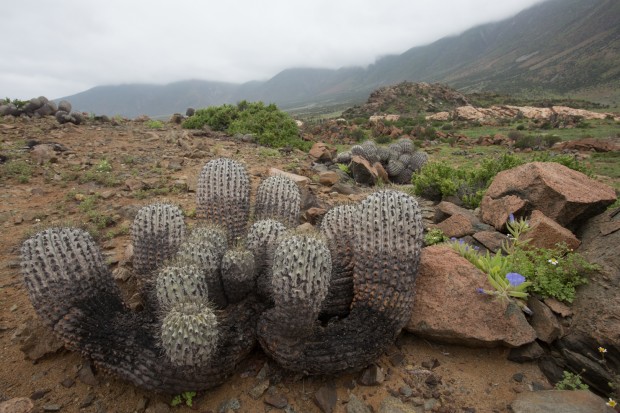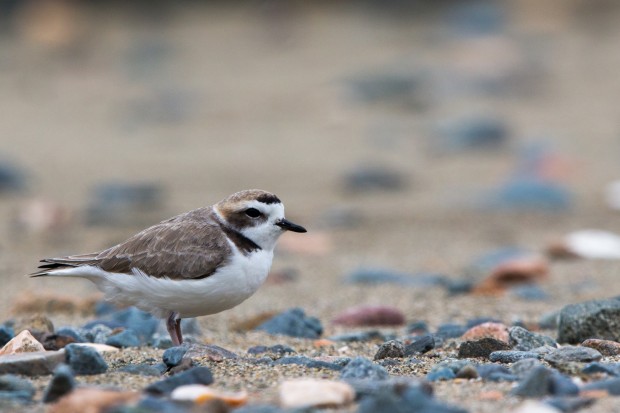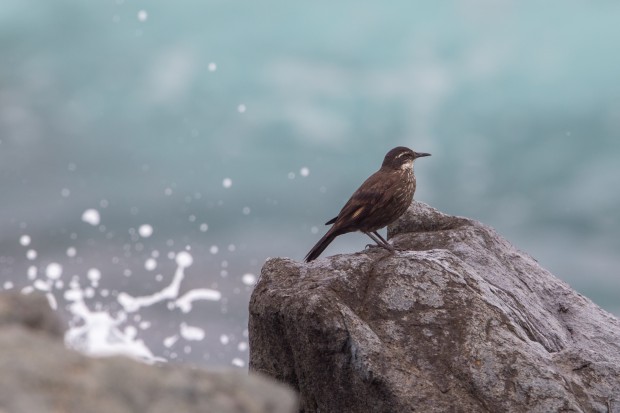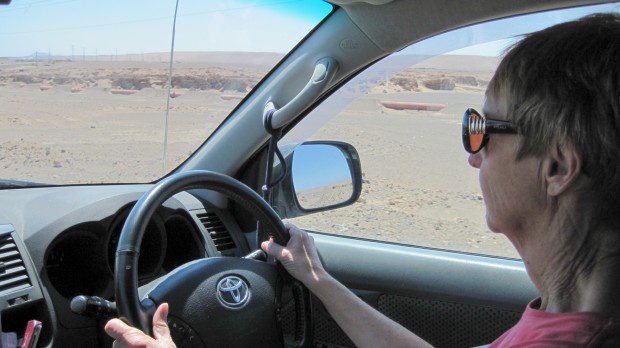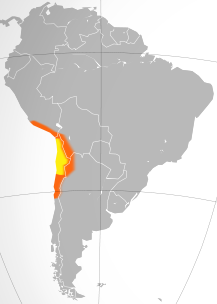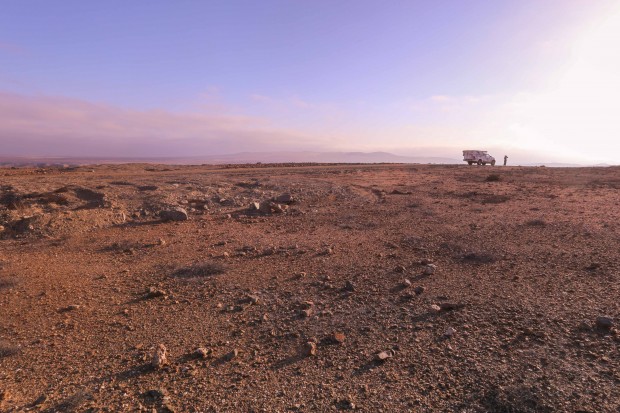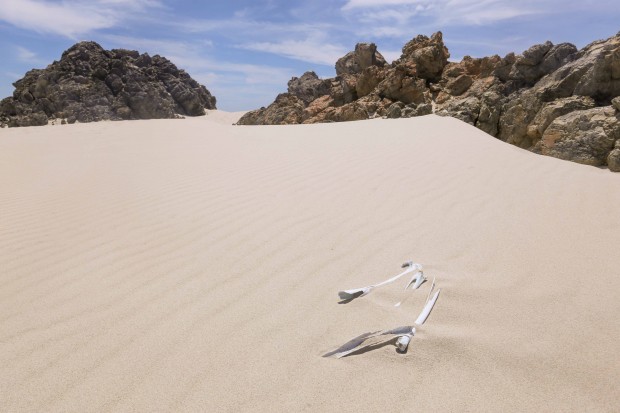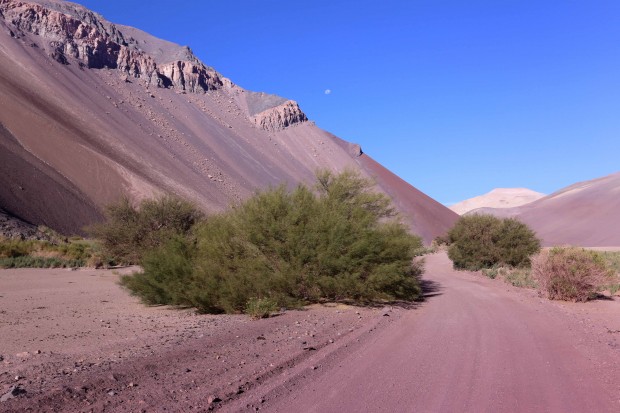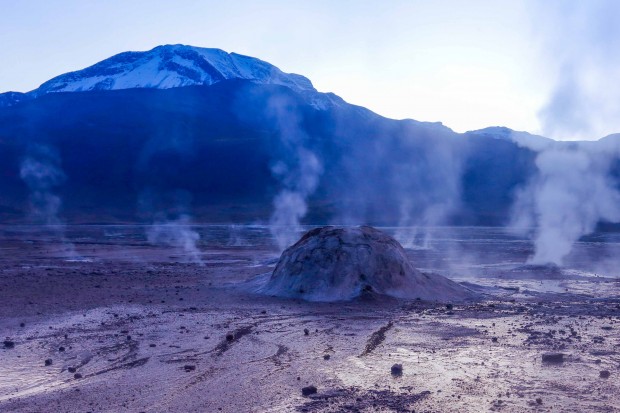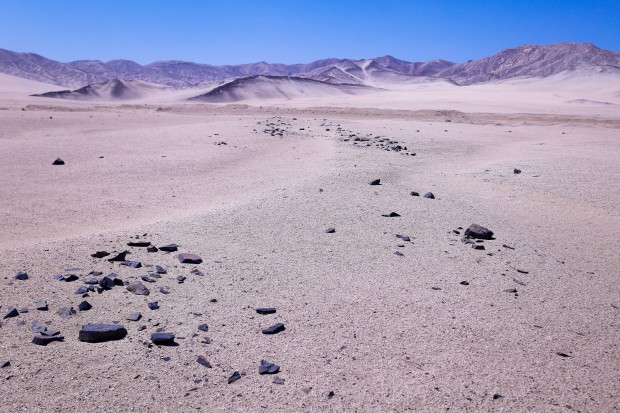Paula and I have just spent several weeks in the Atacama desert searching for wildlife. It’s the driest place on earth but there are areas where nature provides enough moisture for a wide variety of life to survive.
The Atacama is a huge area and we found that two factors were key as to where animals and plants thrived, firstly the proximity to the coast and secondly the altitude.
In the west the Atacama starts right on the Pacific seashore, extending across a narrow coastal plain and then up and over a narrow range of mountains about 50 miles wide. This is the coastal desert and stretches about 600 miles from north to south.
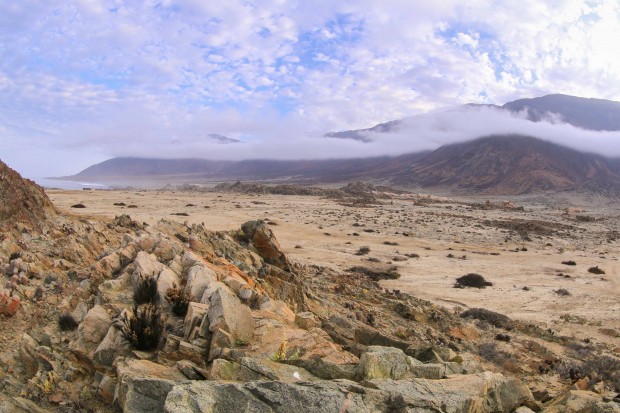
El Camanchaca del desierto de la costa
The prevailing wind blowing from the ocean moves clouds of fog over the coastal plain and then up and over the mountains, enveloping the plants in moisture. This bountiful fog is locally called the ‘Camanchaca‘.
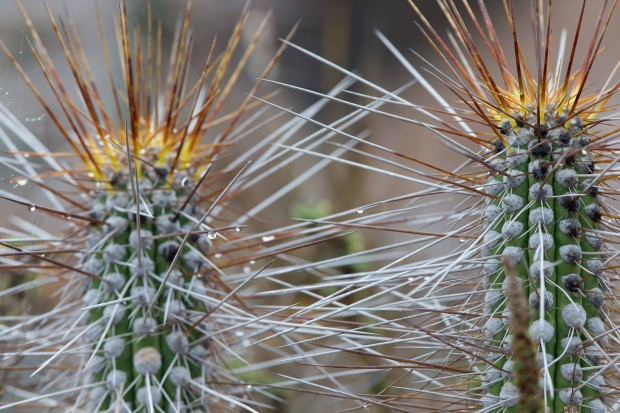
Cacti are the predominant family of plants that have adapted to this.
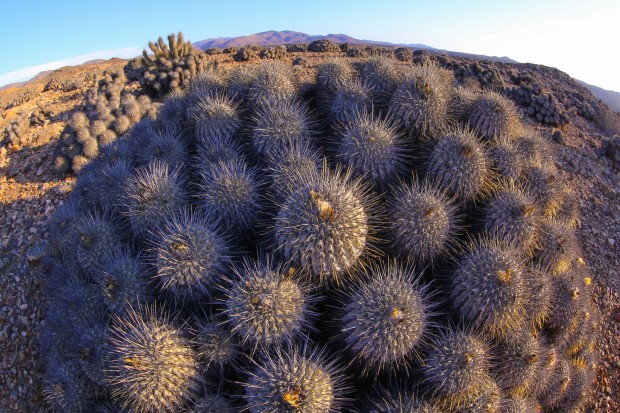
Un niebla-prado lleno de cactus
There are a few special areas in this Coastal Desert where cacti thrive exceptionally well , such places are called ‘fog meadows’ and we found such an area near the Llanos de Challe National Park, where there were hillsides covered in cacti particularly of the Copiapoa family.
Paula and I spent some glorious days in these ‘fog meadows’ photographing these amazing plants but always being very carful when we bent down !
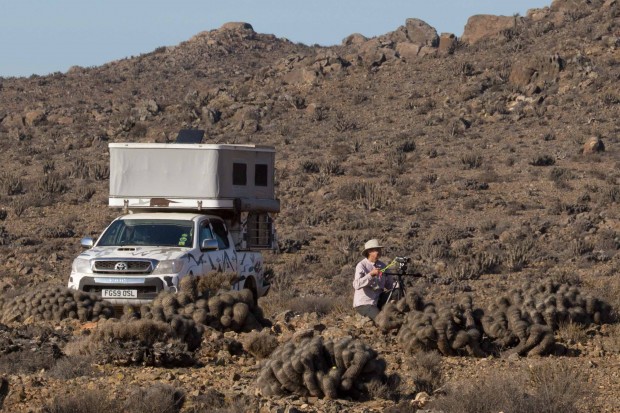
Paula filmando en los niebla-prados.
A common reptile of the ‘fog meadows’ was the Lava lizard.
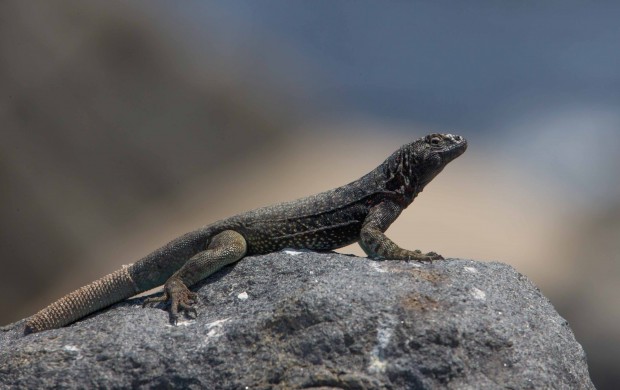
Corredor de Atacama
To the east of the coastal range of mountains the temperatures soar. This part of the Atacama is called the ‘absolute desert’, probably because there is absolutely nothing there and not surprisingly our search for wildlife was almost fruitless.
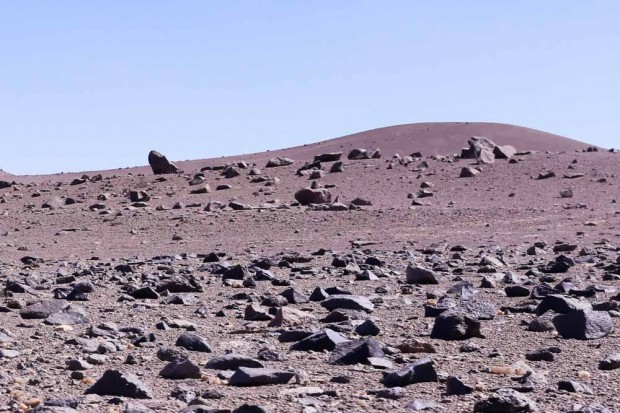
Pudimos encontrar solamente rocas y piedras en el desierto absoluto.
Several hours in the relentless heat was enough for us. We could find no living things at all, except in the hazy sky above, where a Mountain Caracara flew.
The plains of the absolute desert range between 3,500 ft – 6, 500ft but across these plains there run deep gorges called Quebradas. Through these gorges team the sporadic floods that tear down from the high Andes in the summer.
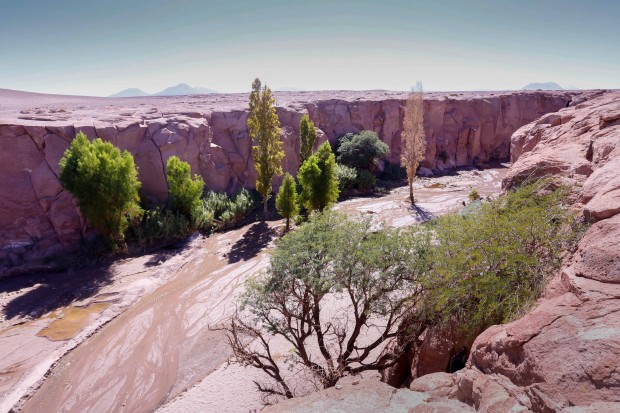
Una Quebrada
We tried in vain to access some of these precarious gorges, native Algarrobo trees often found a niche at the foot of the cliffs in which to grow and small groups of Grey-headed Sierra Finches were usually present.
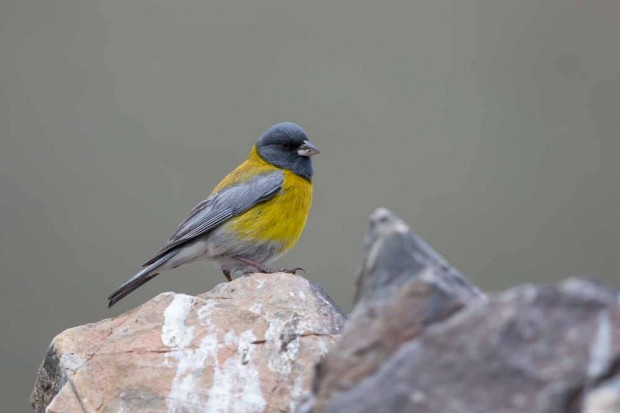
Cometocino de Gay o Comesebo Andino.
Continuing in an easterly direction towards the Andes the altitude increases and so does the wildlife. One special habitat in the Atacama are the saline lakes, salars. These are fed with underground water from the Andean snowfields. These saline lakes are a magnet for waterbirds such as Andean Avocets and Flamingos.
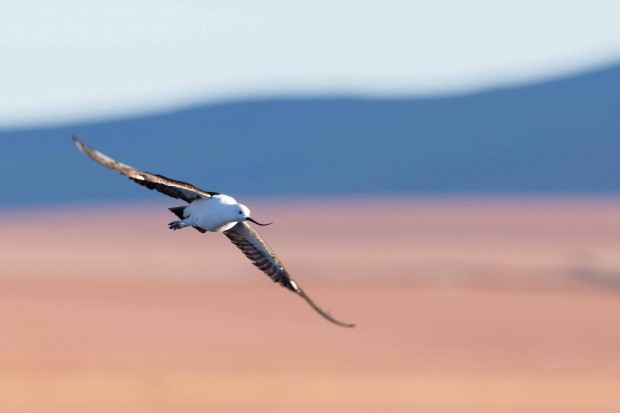
Caiti o Avoceta Andina
When the altitude reached between 6,000ft – 11,000 ft we encountered an area of the Atacama known locally as the ‘andean desert’.
Parts of this area are extremely arid but luckily receive run-off from the high volcanic peaks and cacti predominate, particularly tall stately Cardons.
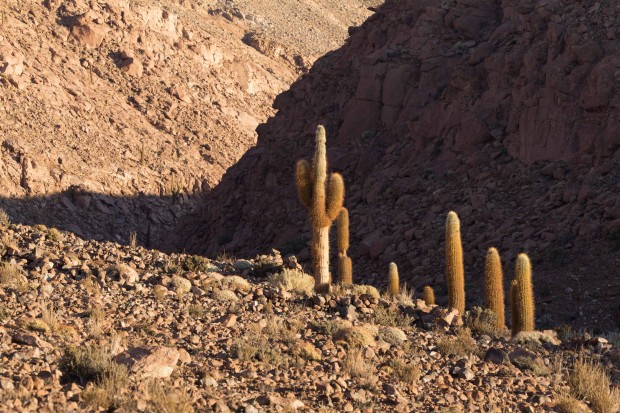
Cardons
It was in the Andean desert that we found the greatest biodiversity.
The most obvious animals were lizards, sunning themselves on rocks or scuttling across the stony ground away from our tramping feet.
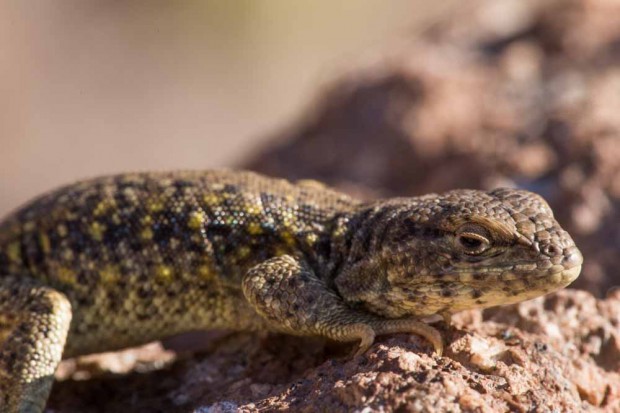
Lioaemus andinus
It’s quite easy to catch a lizard, one just has to be very patient, careful, slow to start with and very quick at the finish!
Once you have caught your lizard it’s possible to admire its beauty in detail, taking care not to hold it by its tail or it will shed and you will be left holding a wriggling bit of discarded flesh.

He cogido una lagartija
Often in the chase the lizard will try to escape, they will hide in a spiky bush, under a rock or disappear down a hole.
Finding them in these situations can be interesting and rewarding, if not scary, for in such places we found scorpions, spiders and numerous beetles.

Escorpion
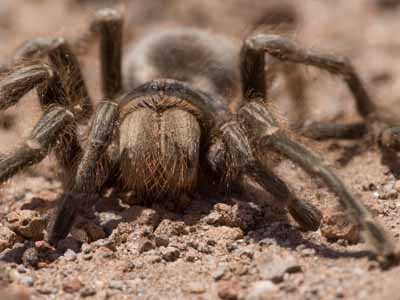
Tarantula
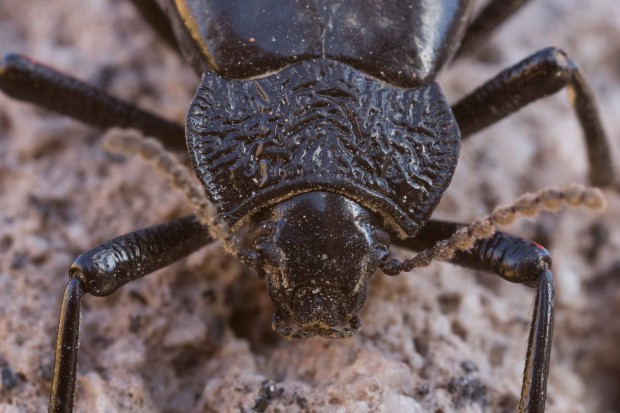
Some of these animals are not everyone’s favourite but we like them! In the driest place in the world it was fascinating for us to discover at last so many animals.
As a complete contrast to these small creatures the next blog will concentrate on one of the largest, most beautiful and graceful birds of the desert; the Flamingo.

